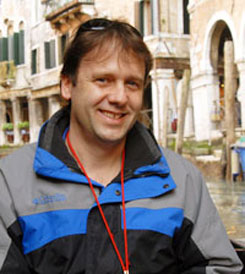My photojournalism career has taken me through a passel of papers, but never in all my time have I had to share work space with so many dummies.
Each year I get the opportunity to invade a different small Kentucky town with the prestigious Mountain Workshops. Sponsored by Western Kentucky University, we parachute into a ready-and-willing city with 100 or so professionals and students. Less than a week later, we’ve photographed, videotaped and written about that town, up one street and down another. We leave them with a new website featuring their burg, a host of multimedia projects about their people and, incredibly, a beautiful and slick black-and-white photo book portraying a slice of their community frozen in time from that October week.
In the process, we teach the students how to document the town as unobtrusively as possible, taking only pictures, leaving only memories. Students and faculty have been taking part in these workshops since 1976, back when they traveled Kentucky photographing the disappearance of one-room schoolhouses.
This year, in Owensboro, we were asked not to disturb the dummies. We’ve set up shop at the Museum of Science and History. The museum features racecars in a “Speedzeum,” as well as a “Playzeum” for kids. And, speaking of being frozen in time, there’s a replica of an ice-age Mammoth, parts of which were dredged from the Ohio River, which borders the town to the North. I learned the real-life model probably weighed more than all of us workshoppers combined, at least before we ate the cooking made for us by two incredible volunteer chefs.
But back to the dummies: they stand around here doing absolutely nothing. Well, that’s not precisely true. They stand, stopped in time, depicting an earlier era of Owensboro life. There’s a family eating breakfast, plastic eggs sunny side up, former Gov. and U.S. Sen. Wendell Ford giving a speech and a barbershop tableau with Ronald Reagan on the wall advertising the health benefits of smoking.
They help the museum tell Owensboro’s story, but I would be lying if I said they didn’t creep me out. At least I don’t have to work with them staring over my shoulder, second-guessing my photo choices.
By Sunday, most of us will be gone; Pulitzer Prize-winning photographers, writers, editors, two guys working on time-lapse photography and all of the “labbies” who helped us pull this traveling road show together. If we’re lucky, we coaches will have learned as much as our students.
Only a dummy could be left unchanged by this experience.






